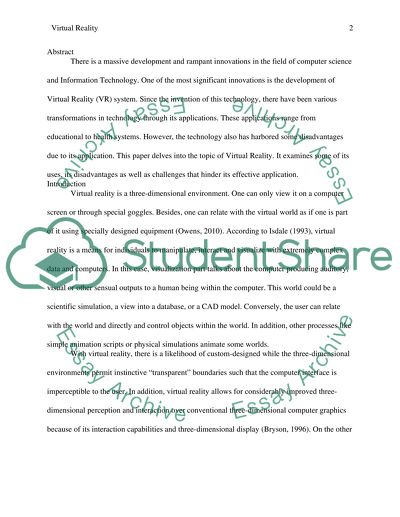Cite this document
(“Virtual Reality Research Paper Example | Topics and Well Written Essays - 2500 words”, n.d.)
Retrieved de https://studentshare.org/information-technology/1390478-virtual-reality
Retrieved de https://studentshare.org/information-technology/1390478-virtual-reality
(Virtual Reality Research Paper Example | Topics and Well Written Essays - 2500 Words)
https://studentshare.org/information-technology/1390478-virtual-reality.
https://studentshare.org/information-technology/1390478-virtual-reality.
“Virtual Reality Research Paper Example | Topics and Well Written Essays - 2500 Words”, n.d. https://studentshare.org/information-technology/1390478-virtual-reality.


